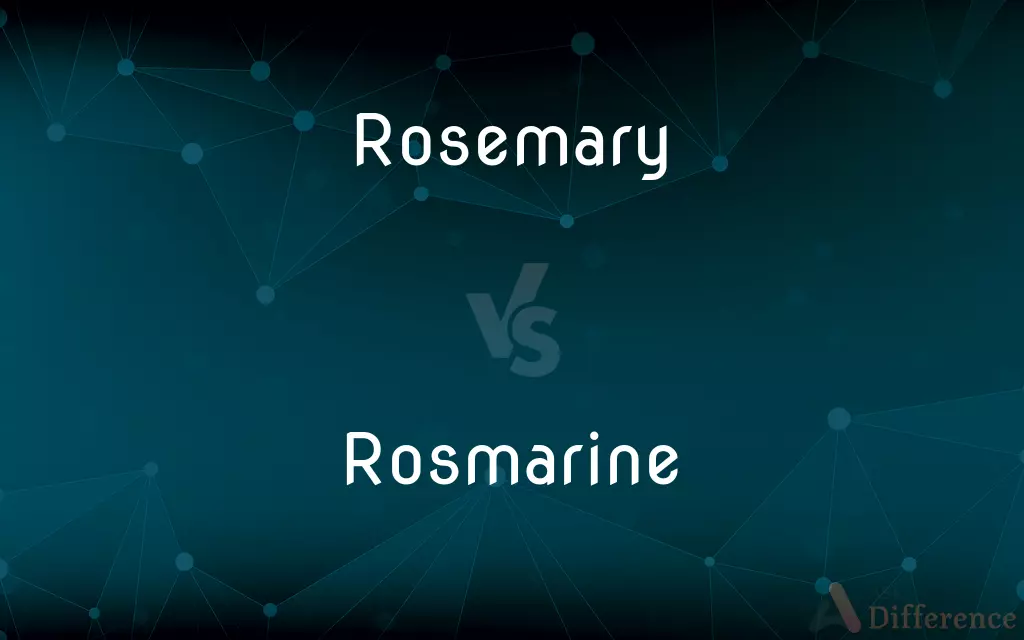Rosemary vs. Rosmarine — What's the Difference?

Difference Between Rosemary and Rosmarine
ADVERTISEMENT
Definitions
Rosemary
Salvia rosmarinus, commonly known as rosemary, is a shrub with fragrant, evergreen, needle-like leaves and white, pink, purple, or blue flowers, native to the Mediterranean region. Until 2017, it was known by the scientific name Rosmarinus officinalis, now a synonym.
Rosmarine
(obsolete) Dew from the sea.
Rosemary
An aromatic evergreen Mediterranean shrub (Rosmarinus officinalis) in the mint family, having light blue or pink flowers and narrow grayish-green leaves that are used in cooking and perfumery.
Rosmarine
(obsolete) Rosemary.
Rosemary
The leaves of this plant used as a seasoning.
ADVERTISEMENT
Rosmarine
Dew from the sea; sea dew.
That purer brineAnd wholesome dew called rosmarine.
Rosemary
A shrub, Salvia rosmarinus (formerly Rosmarinus officinalis), that originates from Europe and Asia Minor and produces a fragrant herb used in cooking and perfumes.
Rosmarine
Rosemary.
Rosemary
A labiate shrub (Rosmarinus officinalis) with narrow grayish leaves, growing native in the southern part of France, Spain, and Italy, also in Asia Minor and in China. It has a fragrant smell, and a warm, pungent, bitterish taste. It is used in cookery, perfumery, etc., and is an emblem of fidelity or constancy.
There's rosemary, that's for remembrance.
Rosmarine
A fabulous sea animal which was reported to climb by means of its teeth to the tops of rocks to feed upon the dew.
And greedly rosmarines with visages deforme.
ADVERTISEMENT
Rosemary
Widely cultivated for its fragrant gray-green leaves used in cooking and in perfumery
Rosemary
Extremely pungent leaves used fresh or dried as seasoning for especially meats

















































